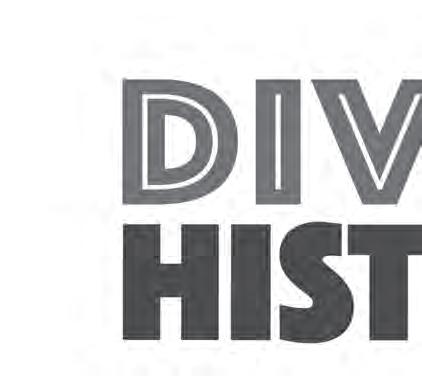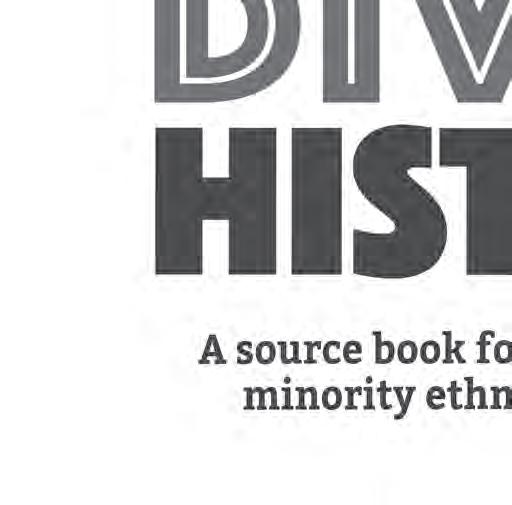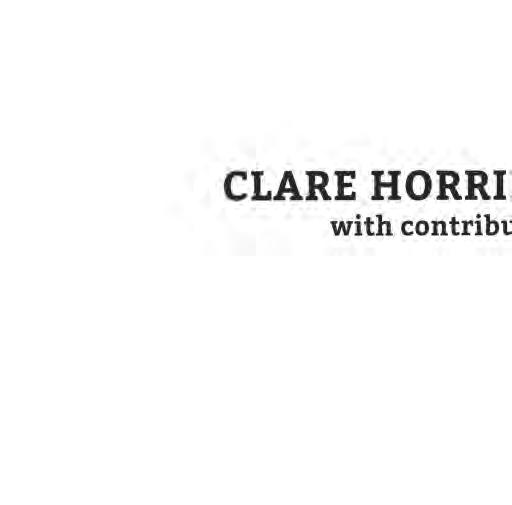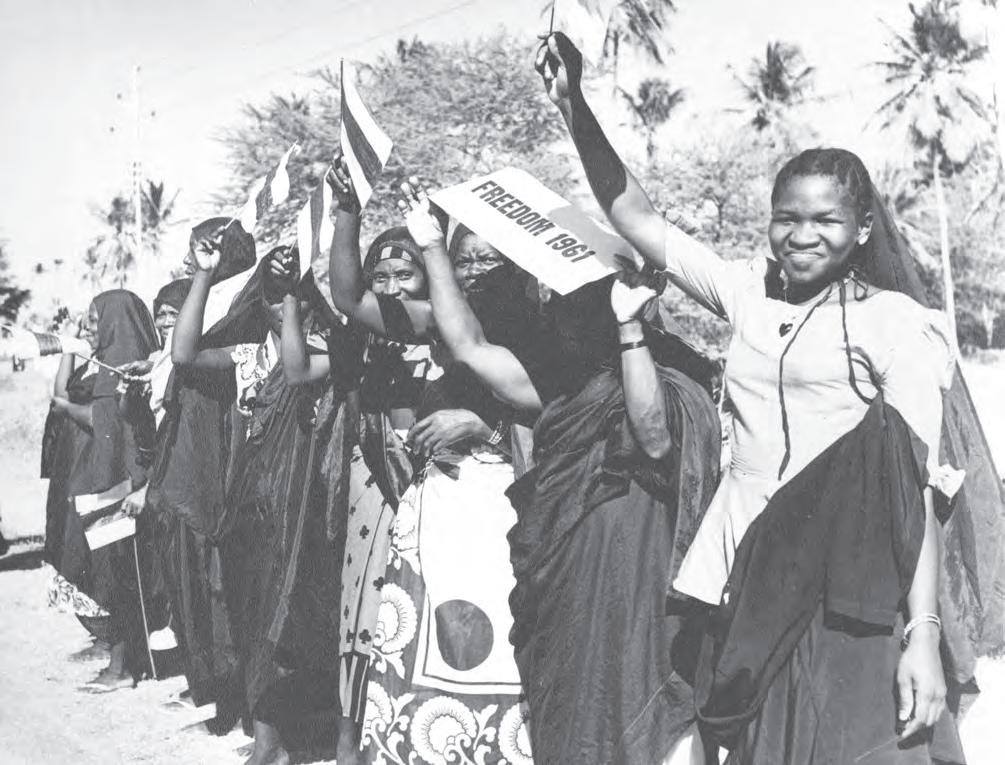



BLOOMSBURY EDUCATION
Bloomsbury Publishing Plc
50 Bedford Square, London, WC1B 3DP, UK 29 Earlsfort Terrace, Dublin 2, Ireland
BLOOMSBURY, BLOOMSBURY EDUCATION and the Diana logo are trademarks of Bloomsbury Publishing Plc
First published in Great Britain, 2022 by Bloomsbury Publishing Plc
This electronic edition published in 2022 by Bloomsbury Publishing Plc
Text copyright © The National Archives, 2022
Images Crown Copyright © Reproduced with permission of The National Archives, 2022 (unless otherwise stated)
The National Archives logo © Crown Copyright, 2022
Clare Horrie and Rachel Hillman have asserted their rights under the Copyright, Designs and Patents Act, 1988, to be identified as Authors of this work
Every reasonable effort has been made to trace copyright holders of material reproduced in this book, but if any have been inadvertently overlooked the publishers would be glad to hear from them
Bloomsbury Publishing Plc does not have any control over, or responsibility for, any third-party websites referred to or in this book. All internet addresses given in this book were correct at the time of going to press. The authors and publisher regret any inconvenience caused if addresses have changed or sites have ceased to exist, but can accept no responsibility for any such changes
All rights reserved. This book may be photocopied, for use in the educational establishment for which it was purchased, but may not be reproduced in any other form or by any other means – graphic, electronic, or mechanical, including photocopying, recording, taping or information storage or retrieval systems – without prior permission in writing of the publishers
A catalogue record for this book is available from the British Library
ISBN: PB: 978-1-8019-9050-9; ePDF: 978-1-8019-9052-3; ePub: 978-1-8019-9053-0
InteriordesignandtypesettingbyJaneneSpencer
To find out more about our authors and books visit www.bloomsbury.com and sign up for our newsletters








8
Foreword 11
Part 1: The development of Church, state and society in medieval Britain 1066–1509 and in Britain 1509–1745
Lesson Topic
DatePage
1 A Black figure in the Domesday Abbreviato Society in medieval England1086 14
2John Blanke Society in Tudor England1507 17
3Black Tudors Society in Elizabethan England1596 21
4Jean Barbot Society in seventeenth-century West Africa 1682 25
Part 2: Ideas, political power, industry and empire: Britain, 1745–1901
Lesson Topic DatePage
5Seventeenth-century Jamaica Jamaica and the British Empire1698 30
6Black Georgians Society in Georgian Britain1746 33
7The ‘Black Poor’ Society in Georgian Britain1780s 36
8Slavery in Bermuda Slavery 1786 39
9Resistance to slavery in St Vincent Slavery 1786 43
10Olaudah Equiano Slavery 1792 46
11William Davidson Cato Street Conspiracy 1820 49
12The Jamaican Slave Rebellion Slavery 1832 53
13 William Cuffey Chartist Movement 1834 56
14Mary Seacole Crimean War 1869 60
15The Jubilee Singers
16Samuel Coleridge-Taylor
Musical culture in Victorian Britain 1870s 63
Musical culture in Victorian Britain 1875–1901 68
17Adbul Karim Queen Victoria’s household1894 71
18The British Empire in the Victorian periodBritish Empire 1895 74
Introduction
13
29
CONTENTS
CONTENTS
Lesson Topic
19Sophia Duleep Singh
20Walter Tull
Suffragettes
DatePage
1912 78
First World War 1914 81
21Naik Darwan Sing Negi First World War 1914–1918 84
22Jemadar Mir Dast First World War 1915 87
23Euan Lucie-Smith First World War 1915 90
24Chinese Labour Corps in the First World WarFirst World War 1917 94
25Indian Labour Corps in the First World WarFirst World War 1919 97
26The 1919 Race Riots Race relations in post-war Britain1919 100
27Massacre in Amritsar Life in post-war India 1920 103
28The British Empire in the 1920s British Empire 1920s 106
29Shapurji Saklatvala MP 1920s politics 1922 109
30Marcus Garvey in Britain Civil rights movement 1928 112
31The League of Coloured Peoples Civil rights movement 1935 115
32Indian airmen in the Second World WarSecond World War 1939 118
33Caribbean airmen in the Second World WarSecond World War 1939 121
34African soldiers in the Second World WarSecond World War 1939 124
35Gold Coast in the Second World War Second World War 1939–1945 127
36Nursing in the Second World War Second World War 1939–1945 130
37Industry in India in the Second World WarSecond World War 1939 133
38West Indies Calling Second World War 1944 136
39Noor Inayat Khan Second World War 1945 139
40Racial discrimination in the Second World WarSecond World War 1945 143
41Indian soldiers in the Second World WarSecond World War 1947 146
42The Partition of India
43The Empire Windrush
44Sam Beaver King
Partition of India 1947 149
The Windrush Generation1948 152
The Windrush Generation1948 155
Part 3: Challenges for Britain, Europe and the wider world: 1901 to the present day 77
Lesson Topic
45The Causeway Green ‘Riots’
46‘A West Indian in England’
DatePage
The Windrush Generation1949 158
The Windrush Generation1949 161
47The Independence of Ghana Independence of African nations1957 164
48Paul Robeson Political protest in 1950s Britain1959 167
49Louis Martin Race relations in 1960s Britain1966 170
50Immigrant experiences in 1960s BritainRace relations in 1960s Britain1960s 173
51The Independence of Tanganyika Independence of African nations1961 176
52The Independence of Trinidad and Tobago Independence of Caribbean nations 1962 179
53The Independence of Barbados Independence of Caribbean nations 1967 182
54Sislin Fay Allen
Multiculturalism in 1960s Britain1968 185
55The Race Relations Act 1968 Race relations in 1960s Britain1968 188
56Notting Hill Carnival Race relations in 1960s Britain1970s 191
57The British Black Panthers Black Power in 1970s Britain1970s 194
58The Mangrove Nine Police relations with the Black community 1971 197
59SUS Law Police relations with the Black community 1970s and 1980s 200
60The Brixton riots Police relations with the Black community 1981 203
INTRODUCTION
This book contains 60 lessons to help transform your students’ learning experience in Key Stage 3 history by helping you to integrate more diverse histories into your schemes of work. The vast majority of lessons are based on original sources from our very own government National Archives collections. We hope to build on the concept that archival sources can be used as evidence to investigate and understand the past.
Diverse Histories is not intended as a ‘text book’ or ‘topic book’, but as a resource to provide starter lessons to enrich and diversify the topics that you may already teach. It is not our purpose to provide a detailed historical explanation of a particular topic, however, we do provide the historical context for the sources we have included to show the fit within the curriculum.
It is important to note that some of the sources which appear in this book cover sensitive historical subjects. Some reflect language and concepts that are entirely unacceptable and inappropriate today and this has been highlighted in the captions with the source. We suggest that teachers look at the material carefully before introducing it to their students. It would be helpful to discuss with them the use of language and ideas contained in such material beforehand. Teachers may wish to break down the sources into smaller extracts if they find the sources too long or difficult in any way.
All lessons are rooted in an enquiry-led approach and based on a single archival source. Each lesson includes teacher’s notes which explore the following questions: What is this source?, What can we infer from this source?, Why does The National Archives
have this source? and What is the context of this source? We also provide an enquiry question, suggested activity and ideas for taking learning further. The enquiry activity varies, for example, it may involve employing the concept of ‘the mystery document’, or the ‘five-second rule’. Prompt questions are also given as a guide for each source, which are generally used creatively as part of the lesson enquiry. Of course there are also certain universal questions that should be applied to all sources when students start to investigate them, some of which are listed at the end of this introduction. We hope that working with sources in this way will help students to frame their own historically valid questions and help them to create written narratives and analyses.
The ‘Exploring further’ section within the lesson plan is designed to grow subject knowledge and research skills. Here, we have suggested particular tasks and activities. Often, we have also recommended particular texts for teachers on the topic, with suggestions for how they might be used.
The following types of sources form the basis of the lessons in this book: photographs, government reports, telegrams, cartoons, posters, police reports, minutes, manuscripts, maps, private and official letters, film production notes and newspapers. We hope that encountering such a rich range of source types will expose pupils to the stuff of history while strengthening their skills in handling primary evidence and helping them to form their own interpretations.
The 60 lessons in this book will support teachers in delivering the key aims of the
8 Diverse Histories © Clare Horrie and Rachel Hillman, 2022
National Curriculum in history to support understanding of ‘the diversity of societies and relationships between different groups, as well as their own identity and the challenges of their time’ and to ensure that all students understand the methods of historical enquiry.

All of the lessons reflect the Key Stage 3 history National Curriculum content offering. Therefore, teachers looking for sources relating to such themes as the development of Church, state and society in medieval Britain 1066–1509; the development of Church, state and society in Britain 1509–1745; ideas, political power, industry and empire: Britain 1745–1901; and challenges for Britain, Europe and the wider world 1901
to the present day, will find help in this book. The lessons are all based on The National Archives’ collections and are not readily found in existing textbooks. They offer a unique way for secondary school students to access real historical documents rather than having to work with secondary texts and narrative histories. For example, you will find lesson enquiries on medieval trumpeter John Blanke, Second World War spy Noor Inayat Khan, Cato Street conspirator William Davidson, singer and civil rights campaigner Paul Robeson, composer Samuel ColeridgeTaylor and the Victorian Jubilee Singers. There are also diverse stories for BAME men and women, about the famous and not so famous, reflecting stories of agency and resistance.
‘Crowds campaign for Independence, March 1961’ (CO 1069/166 (12)). Photograph of a demonstration in favour of independence for Tanganyika.
Diverse Histories © Clare Horrie and Rachel Hillman, 2022 9
INTRODUCTION
We hope that teachers will be encouraged by this book to make use of their local archives and The National Archives as historians, and to use it to signpost the type of records that can be used to research further diverse histories.
Finally, our lessons could also be used appropriately to support both English and PSHE curriculums at Key Stage 3.
General questions for sources Identification
• What type of document is it?
• Who produced it? Do you know anything about the author/creator?
• When was it written/produced?
• Why was it written/produced?
Understanding
• Consider the key words and their meaning within the source.
• What points or arguments are made in the source?
• What values or attitudes does the content of the source reflect?
• How does the content of the source relate to a given historical situation?
• Are there any clues about the intended audience for the source?
• How reliable is the source and does it have any limitations?
• How does the source relate to other sources from this period? Does it share the same ideas, attitudes and arguments? How would you explain any differences between sources? (For when looking at several sources on the same topic.)
Clare Horrie and Rachel Hillman
10 Diverse Histories © Clare Horrie and Rachel Hillman, 2022
FOREWORD
Being asked to write a foreword for a Key Stage 3 resource book about a subject that I dropped at the first opportunity at school is certainly something I’d never anticipated. Yet my story isn’t unusual, with research from the History Matters group showing that history is the third least popular subject at university amongst students of African and Caribbean heritage, despite great interest at community level.1
By exploring records at The National Archives and asking critical questions about why government departments including the Home Office, the Colonial Office, the Foreign and Commonwealth Office, and so forth, collected them, this important resource aims to inspire a more inclusive approach to teaching history, and to challenge the sense of alienation felt in many classrooms.
As the official archive of the UK Government (and as what some have described as ‘The Babylon Archive’), The National Archives does more often than not represent the voice of officialdom, and many of the records that relate to Black, Asian and minority ethnic communities have unfortunately been gained from the over-policing and surveillance of them. However, and as this text deftly shows, there are also countless examples of community voices represented as well – be it in letters of protest made to the Commission for Racial Equality and other bodies, or in the campaign material of activist groups apprehended by the police – the archives are a rich resource of records of resistance and struggles for social justice and change, waiting to inspire the next generation of historians.
This work marks a timely and significant contribution to the teaching of Key Stage 3 history, and will be an invaluable resource in Britain’s multicultural classrooms. Had it been available thirty years earlier, my relationship with history at school might have been very different.
1 Adi, H. (2019) Black British History: New Perspectives. London: Zed, p. 2.
Kevin Searle
Diverse Histories © Clare Horrie and Rachel Hillman, 2022 11
THE WIDER WORLD: 1901 TO THE PRESENT DAY
LESSON 26
THE 1919 RACE RIOTS
CONNECTION TO THE CURRICULUM

Challenges for Britain, Europe and the wider world: 1901 to the present day
Aim: To find out about race relations in post-war Britain.
Historical event: The 1919 Race Riots
Source: Extract of a letter written by Cardiff’s Chief Constable to the Under Secretary of State on 13th June 1919 (HO 45/11017/3776969)
Caution: This source contains language that is inappropriate and unacceptable today.

100 Diverse Histories © Clare Horrie and Rachel Hillman, 2022 PART 3 CHALLENGES FOR BRITAIN, EUROPE AND
TEACHER’S NOTES
What is this source?
This is an extract of a letter written by Cardiff’s Chief Constable to the Under Secretary of State on 13th June 1919. It is held within a Home Office file entitled ‘ALIENS: Repatriation of Coloured Seamen etc.’ The word ‘aliens’ refers to people not classed as citizens or nationals of the UK. Today using ‘alien’ to describe immigrants is seen as dehumanising and derogatory.
What can we infer from this source?
This document is the fifth page of a longer document – indicated by the number ‘5’ in brackets at the top. It has been typewritten, which helps to date it, and it is typed on headed paper from the Cardiff City Police. These details tell us that the writer is from the police force and this is a formal document being sent to another person or organisation.
Once you start to read the contents of this document, it quickly becomes clear that the writer is describing serious events that have involved both ‘coloured’ and ‘white’ men.
The ‘coloured’ men are described as having been in possession of firearms, whilst the ‘Britishers’ have caused ‘wilful damage’, although it’s not clear if they also had guns or weapons. A number of people have been hurt, two fatally – ‘one white and one coloured man’ – and the writer also implies that there has been much damage to property too.
The writer goes on to talk specifically about Butetown where he is concentrating ‘all my force’, suggesting that he must be senior within the Cardiff City Police. He writes about the ‘white population’ as being the ‘aggressors’, implying that they initiated this
conflict. However, the writer then says that he thinks there are a number of reasons to explain why this feeling exists. The writer refers to the feelings of both groups. He describes the ‘white people’ disliking the interracial relationships that are taking place, and the fact that many of the ‘coloured men’ have earned good wages during the war.
In contrast, the writer lists the ‘coloured men’s’ resentment at losing their jobs to White crews onboard ships This appears to be in direct reference to the repatriation scheme launched by the government in February 1919 in British seaports, to return Arab and Black colonial workers to their country of origin.
Why does The National Archives have this source?
This document is held within a Home Office file.
What is the context of this source?
After the end of the First World War, millions of people were faced with unemployment and a shortage of housing. In port towns across the country, many White people, angry at the lack of jobs, blamed ethnic and minority communities whose numbers had grown during the war. Yet there were already established Black and ethnic minority communities settled in Cardiff before the war, as evident in the 1911 census.
On 11th June in Cardiff, conflict ensued between White men and local Butetown communities of Yemeni, Somali and AfroCaribbean backgrounds. Riots lasted for three days before dying down. Other violent riots occurred in places including Glasgow, Hull, London, Newport, Barry and Liverpool.
Diverse Histories © Clare Horrie and Rachel Hillman, 2022 101 LESSON 26 THE 1919 RACE RIOTS
LESSON IDEAS
ENQUIRY QUESTION
What does this document reveal about race relations in Britain in 1919?
Getting started
Use this document as part of your work to introduce students to post-First World War Britain and race relations at this time.
Ask the students to look at the appearance of the document for thirty seconds. Ask the following questions:
• What type of document do you think it is? Why?
• Where do you think it has come from?
• Is it the full document?
Ask them to explain their answers.
Exploring further
Give the students time to read the document properly and think about the following questions:
• What type of document do you think it is now?
• What information can you glean about the author?
• What events have taken place?
• How does the author explain the reasons for these events?
Bring the students’ answers together in a class discussion about what this document reveals about Britain and race relations after the First World War.
Provide students with further details and context about the 1919 Race Riots using
the teacher’s notes. Show them this video from The Black Curriculum as a summary of the information: www.youtube.com/ watch?v=AQ2HmVsQCIo. Can the students plan and storyboard their own short video about the riots based on what they now know about these events?
Follow-up tasks
• Introduce students to documents relating to events that occurred in other places as part of the 1919 unrest. Were all these events driven by ethnicity? The National Archives website has an excellent resource containing documents that can be used for this activity. See: www. nationalarchives.gov.uk/education/ resources/1919-race-riots.
• Introduce students to the work of historian Jacqueline Jenkinson, the author of Black 1919, which looks at the motivations and make-up of the rioters and how the police responded to events.
102 Diverse Histories © Clare Horrie and Rachel Hillman, 2022
PART 3 CHALLENGES FOR BRITAIN, EUROPE AND THE WIDER WORLD: 1901 TO THE PRESENT DAY


